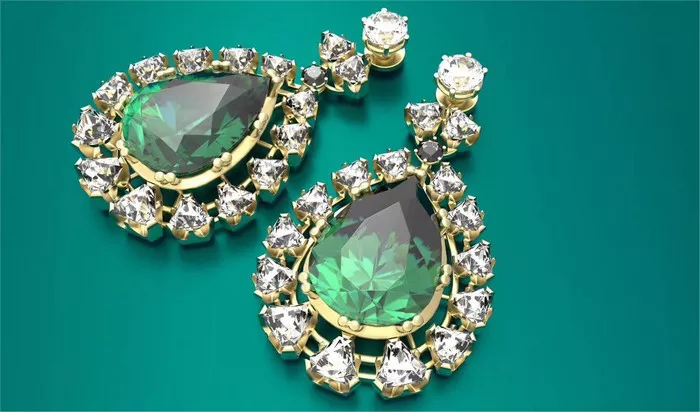Emeralds, with their captivating green hues and rich history, have long been prized gemstones. From ancient civilizations to modern jewelry aficionados, these gems have held a special allure. However, not all emeralds are created equal. Like all gemstones, emeralds are graded based on specific criteria to determine their quality and value. In this comprehensive guide, we delve into the intricate process of emerald grading, covering everything from color evaluation to cut considerations.
Color Evaluation: The Crucial Factor
Color reigns supreme in the realm of emerald grading. It is the primary determinant of an emerald’s value and allure. The ideal hue for emeralds is a vivid bluish green, radiating depth and brilliance. However, the spectrum of acceptable hues extends from slightly yellowish green to bluish green. Personal preferences may sway towards specific hues, but a balanced hue is universally sought after.
Balancing hue, tone, and saturation is crucial for achieving the pinnacle of emerald color. Hue refers to the dominant color, while tone denotes the lightness or darkness of the stone. Saturation reflects the intensity or purity of the hue. A harmonious blend of these elements creates a mesmerizing visual impact.
Examples of various hues include:
Bluish Green: The epitome of emerald color, characterized by a rich, cool-toned green with hints of blue.
Green: A pure, vibrant green without noticeable undertones.
Yellowish Green: Tinged with yellow, adding warmth to the green hue.
Clarity Assessment: Unveiling the Inclusions
Emeralds, classified as Type III gemstones, are notorious for their inclusions. These internal characteristics, often referred to as “jardin” (French for garden), are emblematic of the gem’s natural origin. While flawless emeralds are exceptionally rare, the presence of inclusions adds character and authenticity to the stone.
Common inclusions in emeralds include:
Crystals: Tiny mineral formations trapped within the gemstone.
Three-Phase Inclusions: Fluid-filled chambers containing gas, liquid, and solid phases, indicative of natural growth conditions.
Needles: Long, slender crystals that intersect within the emerald, forming intricate patterns.
Gem labs and dealers leverage these inclusions for identification and authentication purposes. However, extreme inclusions can compromise the stone’s durability, especially during cutting and setting processes.
Cut Considerations: Shaping Beauty
The cut of an emerald plays a crucial role in its overall appearance and value. A well-cut emerald will enhance its beauty and maximize its brilliance. However, cutting emeralds can be challenging due to their brittleness and the presence of inclusions.
Faceting: The faceting of an emerald is designed to maximize its color and minimize the visibility of inclusions. Emeralds are often cut in a rectangular or square shape, known as the “emerald cut,” which helps to protect the gem’s corners from chipping.
Complexities: Cutting an emerald requires skill and precision to balance the gem’s natural features with the desired shape and size.
Carat Weight and Pricing: Beyond Size
While carat weight is a factor in emerald grading, it’s not the sole determinant of value. Factors such as color, clarity, and cut play a significant role in determining an emerald’s worth. In some cases, smaller, high-quality emeralds may command a higher price than larger, less appealing ones.
Ultimately, it’s the combination of these factors that determines the overall value of an emerald. A vividly colored, well-cut stone with minimal inclusions will fetch a premium price, regardless of its size.
AAA Letters Grading System: A Standard for Excellence
To simplify the grading process, a standardized system known as the AAA Letters Grading System is used specifically for emeralds. This system classifies emeralds into three categories:
Natural AAA: These emeralds represent the highest quality, exhibiting exceptional color, clarity, and cut. They are prized for their intense bluish green hue and minimal inclusions.
Natural AA: The second-best category comprises emeralds with excellent qualities but may have slightly less vivid color or slightly more noticeable inclusions compared to AAA-grade stones.
Natural A: Emeralds in this category typically have a darker green hue, heavier inclusions, and may even appear opaque. While they may lack the brilliance of higher-grade stones, they still possess a unique beauty.
In conclusion, understanding the criteria for emerald grading is essential for both consumers and industry professionals alike. By evaluating factors such as color, clarity, cut, carat weight, and adherence to grading standards, one can make informed decisions when purchasing or valuing emeralds. Whether it’s a stunning piece of jewelry or a precious investment, the allure of emeralds continues to captivate enthusiasts around the world.


